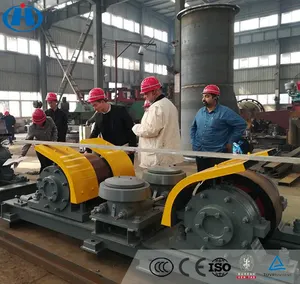
High Quality Washed Kaolin Clay Powder Calcined Kaolin For Agriculture Calcined Kaolin Used In Pakistan And Russia

Activation Kiln Hot Selling Active Lime Rotary Kiln Rotary Lime Kiln Active Lime Production Line China Supplier Low Price








The calcined kaolin rotary kiln is a pivotal equipment in the production of kaolin clay, a material widely used in a variety of industrial applications. This type of kiln is specifically designed to process kaolin into calcined kaolin, which has enhanced properties for use in industries such as paper, ceramics, and refractories.
Rotary kilns for calcining kaolin are engineered to withstand the high temperatures and corrosive environments typical in kaolin processing. The design of a rotary calciner for kaolin includes a rotating cylinder that allows for the even heating of kaolin clay as it tumbles through the drum. The operational efficiency of these kilns is a result of their continuous processing capability and their ability to maintain consistent temperatures.
There are various types of kaolin rotary calciners tailored to meet different industrial needs. Depending on the intended application, these kilns can vary in size and thermal configurations. Calcined kaolin produced in these kilns is a key ingredient in products such as paper to improve printability and paint to enhance opacity and gloss.
A kaolin processing rotary kiln is constructed from robust materials capable of withstanding the thermal stresses involved in calcination. The interior is often lined with refractory materials to insulate the kiln and protect the structure from the intense heat. Advanced features may include systems for precise temperature control and mechanisms to facilitate the efficient transfer of heat to the kaolin material.
The advantages of using a rotary kiln for kaolin processing include improved thermal efficiency and a uniform product outcome. Maintenance considerations for these kilns are centered around prolonging the lifespan and ensuring consistent performance. Regular cleaning and inspection routines are essential to prevent any potential impediments to efficiency.
Efficiency in a kaolin rotary kiln is not just about energy consumption, but also about the quality of the final product. The rotary motion allows for a homogenous calcination process, resulting in a fine-grade calcined kaolin. Additionally, the design of these kilns often incorporates features that minimize energy usage, contributing to a more sustainable production process.